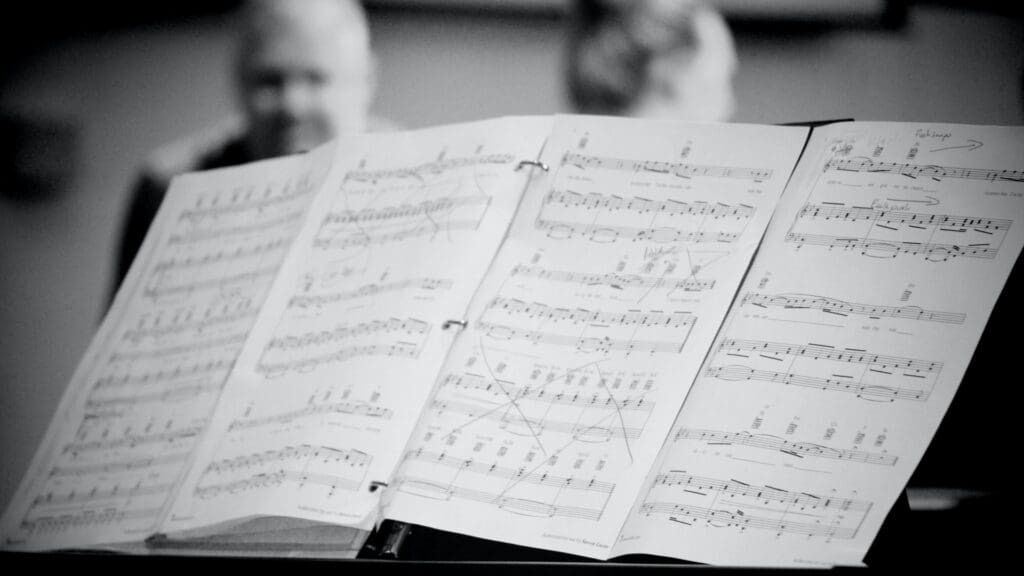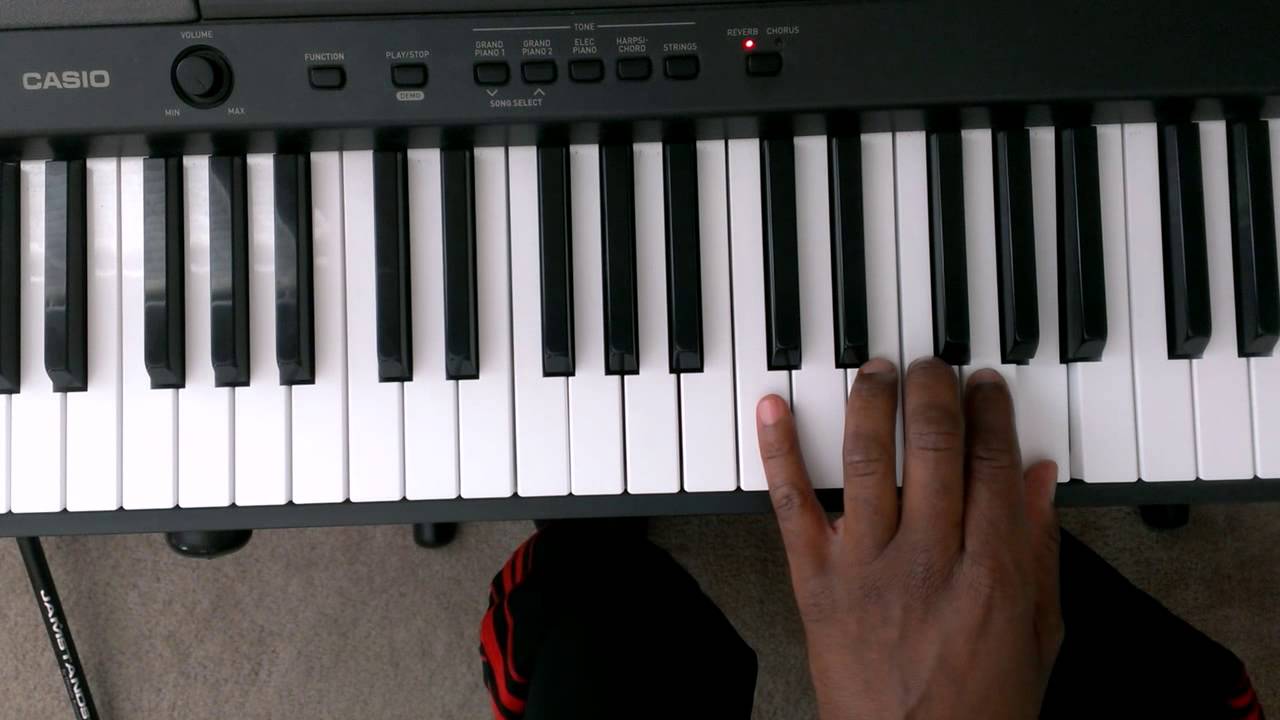
Immerse yourself in the rich tapestry of melodies that reside in the enchanting realm of A minor scale piano songs. The A minor key has captivated musicians and audiences alike for centuries. With its sombre and soulful undertones, it’s the backbone of countless memorable and emotive pieces throughout music history. With its expressive and introspective feelings, legendary composers and contemporary artists alike have deliberately chosen this key to convey their musical narratives with an added layer of profound expressiveness.
From the iconic and timeless Beethoven’s Symphony No. 5, with its dramatic overtures and unparalleled emotional depth, to the modern pop sensation Lady Gaga’s ‘Bad Romance’. The A minor scale weaves magic and transcends genres and eras, effortlessly surpassing time and musical boundaries.
Join us as we explore famous compositions that have beautifully harnessed the emotional potential of the A minor scale. Discover how this captivating key can infuse your own musical creations with its unique and irresistible charm, allowing you to create music that resonates deep within the hearts of listeners and truly stands the test of time.
What Is the A Minor Scale?

The A minor scale, technically speaking, is one of the most straightforward minor keys to play on the piano, with a simple structure and an absence of sharp or flat notes. It follows a specific pattern of whole and half steps, starting from A and progressing to B, C, D, E, F, and G before returning to A. This pattern gives rise to the distinctive melancholy and passionate sound that distinguishes minor scales from their major counterparts.
The beauty of the A minor scale lies not only in its simplicity but also in its versatility. It’s a favourite of composers worldwide, used to create moving ballads, soulful blues, expressive classical pieces, and even contemporary pop songs. From haunting melodies to the soul-stirring riffs of the blues, it offers a wide range of musical possibilities.
The A minor scale’s unique and timeless appeal lends itself to a diverse range of styles and moods. Whether you’re seeking to evoke a sense of melancholy, express deep emotions, or create a captivating atmosphere, the scale has you covered. Its emotional depth and evocative nature make it a powerful tool for musical expression.
Mastery of the A minor scale can unlock a new dimension in your musical expression. By exploring the nuances of this enchanting key and incorporating it into your repertoire, you invite a world of emotional expressiveness and sophistication into your music.
History of A Minor Scale Piano Music
The history of the A minor scale in piano music is as intriguing as the scale itself. A favourite among maestros, it features in some of the most stirring and memorable pieces in the annals of music. The A minor scale made its mark in the Baroque period, with composers like Johann Sebastian Bach imbuing their works with its emotional depth.
Moving into the Classical period, the fondness for this key continued. Wolfgang Amadeus Mozart’s ‘Piano Sonata No. 8 in A minor’ notably stood as a testament to his love for the scale. The delicate and expressive nature of the A minor scale perfectly complemented his compositions, adding a touch of elegance and introspection to his music.
As the Romantic era unfolded, composers like Frederic Chopin and Franz Liszt used the A minor scale to underscore intense emotions and passion. Chopin’s ‘Nocturne in A Minor’ and Liszt’s ‘Hungarian Rhapsody No. 2’ are prime examples of how the scale can create evocative and dramatic musical landscapes. Its rich and haunting qualities resonated deeply with the romantic sensibilities of the time, captivating audiences with their emotional depth.
Modern A Minor Scale Piano Music
In contemporary times, the enchanting allure of the scale continues to thrive, pervading various music genres beyond classical symphonies. Jazz musicians, with their keen sense of improvisation, have found the scale to be a rich source of melodic themes and harmonic progressions.
Legendary jazz pianist Thelonious Monk, known for his distinctive dissonant style, often incorporated the A minor scale in his compositions, infusing them with a touch of melancholy and introspection. Similarly, the A minor scale has found a strong foothold in popular music. Many 20th-century pop and rock classics, from The Animals’ ‘House of the Rising Sun’ to Led Zeppelin’s ‘Stairway to Heaven’, feature the scale, showcasing its versatility and timeless appeal.
In recent years, the A minor scale has also made its presence felt in electronic music. Producers often use the scale to lend an emotional undertone to their tracks. In doing so, they highlight its ability to adapt and evolve with the changing musical landscape.
Indeed, the A minor scale’s capacity to evoke a broad spectrum of emotions—from subtle melancholy to profound sorrow—has ensured its enduring relevance. Whether its a classical sonata, jazz improvisation, rock anthem, or an electronic beat, the scale remains a favoured choice.
Playing the A Minor Scale on the Piano
Playing the A minor scale on the piano is an enriching experience allowing you to explore the scale’s versatile tonality. When your fingers glide across the keys, you unravel the scale’s emotional depth and discover the same melancholic resonance that has captivated countless musicians over the centuries.
To play the A minor scale, begin with the middle ‘A’ key. Follow that with ‘B’, ‘C’, ‘D’, ‘E’, ‘F’, and ‘G’, and finally return to ‘A’. This simple progression, devoid of any sharps or flats, offers a straightforward yet powerful representation of the scale’s haunting beauty.
As you practise the scale, you’ll find yourself not just performing a series of notes but engaging in a timeless musical conversation that transcends genres and eras. Whether you’re an aspiring classical pianist, a budding rockstar, or an electronic music producer, mastering the A minor scale is an essential step in your musical journey. Mastering the scale opens up a world of compositions and melodies to explore.
So, take a seat at the piano, and let your fingers dance to the rhythm of the A minor scale. Whether playing an elegant sonata, a soul-stirring ballad, or an experimental electronic track, the scale will empower you to make your unique musical statement.
Famous A Minor Scale Piano Songs
Here, we’ll unveil the magic of some renowned piano compositions that have beautifully utilised the A minor scale. These timeless pieces, resounding with the soulful charm of this scale, have left an indelible mark on the musical landscape.
From classical maestros to contemporary virtuosos, these enchanting creations have harnessed the poignant beauty of the A minor scale. Let’s embark on this melodious journey, rediscovering the profound emotional depth of these immortal piano pieces in A minor.
Frederic Chopin – “Nocturne in A Minor, Op. 72 No. 1”
Chopin’s unparalleled mastery is on full display in this ethereal piano composition. Delicate and dreamy arpeggios paint a vivid picture of a moonlit night, transporting the listener to a world of sheer tranquillity and serenity. The subtle yet powerful use of the A minor scale in this piece elevates its emotional impact, making it one of Chopin’s most beloved works.
Erik Satie – “Gymnopédie No.1”
This minimalist masterpiece by Satie is a testament to the power of simplicity. The enchanting melody creates a mesmerising effect that is both calming and contemplative. The use of the A minor scale adds an air of melancholy and longing, making it a timeless classic.
Ludwig van Beethoven – “Moonlight Sonata”
Beethoven’s “Moonlight Sonata” is another iconic piece that masterfully utilises the A minor scale. This composition famously features a hypnotic, sombre melody, brimming with raw emotion and deep pathos. As a result, the sonata, a potent exploration of the human condition, resonates with listeners on a profound level.
Beethoven’s beautiful and intense use of the A minor scale in “Moonlight Sonata” creates a dramatic soundscape that inspires and captivates audiences worldwide.
Radiohead – “Karma Police”
Radiohead’s “Karma Police” is a prime example of contemporary use of the A minor scale. With its distinctive chord progression and emotive lyrics, the piece encapsulates the band’s innovative approach to music.
The use of the A minor scale adds a poignant undertone to the song, enhancing its overall impact. Radiohead’s exceptional ability to bend and reshape the scale to their stylistic preferences makes “Karma Police” an enduring classic.
Final Thoughts
Delving into the depths of the A minor scale, we find that notable artists from different eras and genres have seized upon its expressive potential. From the hauntingly beautiful compositions of Beethoven to the genre-bending contemporary tracks of Radiohead, the scale is a shared musical language, a universal conduit for conveying deep emotion.
This ubiquitous musical scale can evoke a broad spectrum of feelings – from melancholy to hope, despair to resilience. It’s incredible how the A minor scale links distinct musical pieces, separated by centuries and genres. This highlights the scale’s inherent versatility and timeless appeal, able to adapt and resonate within the ever-changing musical landscape.
The A minor scale is a perfect example of how music can transcend time, culture, and stylistic boundaries. So, whether you’re an aspiring musician or a seasoned composer, understanding the scale unlocks new dimensions in your musical journey.





